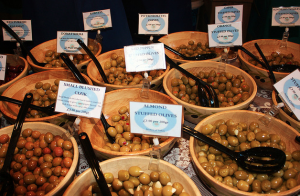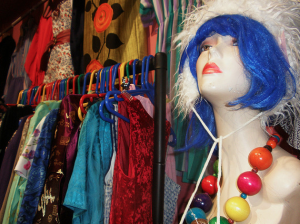Old film cameras are stacked on wooden tables and white buckets for “Norfolk Lavender” and “Chilled Wine” hang in the doorway of Alice’s on the antiques end of Portobello Market, one of the best markets in London.
Like many of these antiques, plenty of stalls in London markets are passed down through generations, an important slice of family history. In her book/blog, both entitled Spitalfields Life, the anonymous “Gentle Author” interviewed a market vendor called Molly the Swagman. Over breakfast at Dino’s Café on East London’s Commercial Street, she said, “My first market was down the lane. I was about three, toddling around on my first day in Petticoat Lane. My great-grandfather had the pitch and it went down through the family. That’s how it was in those days. I used to take the money. It’s where I learned to add up.”
http://www.spitalfieldslife.com
Sir Alan Sugar started his business career in a stall in Petticoat Lane Market, boiling and selling beetroot for a bit of extra cash. Now, the market is mainly a collection of secondhand or inexpensive clothing and fabrics.
 If you’re out and about in that area, you’ll come across some of the top markets in London. Don’t forget to swing by the covered Old Spitalfields Market, followed by the Sunday UpMarket for a vibrant collection of clothing from young designers. The mingling scents of food from around the world will lure you in if the fashion doesn’t. This is your chance to try Tibetan momos, Japanese okonomiyaki or Turkish Gözleme, not to mention Sri Lankan curry, Venezuelan arepas and beautiful Ethiopian veggies.
If you’re out and about in that area, you’ll come across some of the top markets in London. Don’t forget to swing by the covered Old Spitalfields Market, followed by the Sunday UpMarket for a vibrant collection of clothing from young designers. The mingling scents of food from around the world will lure you in if the fashion doesn’t. This is your chance to try Tibetan momos, Japanese okonomiyaki or Turkish Gözleme, not to mention Sri Lankan curry, Venezuelan arepas and beautiful Ethiopian veggies.
From there, head down Brick Lane where blankets are spread with knickknacks and make your way toward Columbia Road Flower Market. Brace yourself for crowds, but dive in and listen to the Cockney vendors shout excitedly about their roses and tulips. It’s a great place to pick up some cheap but beautiful flowers to liven up the flat on a Sunday afternoon.
The area in and around these markets has become home to a mix of Bangladeshi families and 20-something hipsters, curry houses, street art tours and indie music nights.
There are more than 100 street markets in London that spark to life in every corner of the city, impossible to mention all of them in one blog post but here are a few.
In Brixton Market, reggae beats pump through the stalls and you’ll find delicious Caribbean and Guyana street food – goat curry, beans and rice, cassava and ginger beer. Every Saturday sees a themed market take over Brixton Station Road. http://brixtonmarket.net/info/saturday-markets/
Leather Lane Market is another that goes back some 400 years. You won’t find leather there (it was actually named after a local merchant called Le Vrunelane, which was twisted over the years to become what it is today). However, there are a few raving reviews for the food, in particular a certain Turkish lamb sandwich tent which is only open a few hours in the afternoon. Top it with feta. Avoid the cell phone accessories, pillows and bootleg DVDs.
In fact many of the markets thriving in London today are a mumble jumble of treasures and trash. In Deptford Market, one of South London’s busiest, bargains can be found if hunted down among a dizzying mix of electronics, fresh fish, second-hand clothing, fruits and veggies and children’s toys. There are gigantic live snails, sinister dolls and discounted nail polish.
Another much-loved market in the south is Greenwich Market, more of an organised environment with artists and some 150 craft stalls making it a fantastic place to look for unique gifts. Ceramic ware from Jerusalem, green rhubarb tea, an antique chair from the 1870s? Find it here.
If it’s food you’re after, head to London’s oldest food market (and one of the biggest) – Borough Market. Fresh cheese, fresh fish, fresh tomatoes and strawberries, freshly baked brownies. Imagine the smell, stomach rumbling. But go on an empty stomach. You will soon fill it.
If you want to talk about smelly markets, how about Billingsgate Fish Market – London’s oldest wholesale market? Bring home the catch of the day, but remember they mainly sell in bulk. It’s worth catching BBC Two’s recent documentary on Billingsgate. It is a sure example of the pressures put on market vendors today from their competitors – Tesco, Sainsburys and the like.
http://www.bbc.co.uk/programmes/b01j73s3
 Up north, although Camden Market is a popular tourist destination, it remains a favourite among locals as well. Walk along the canal, sip some freshly squeezed Orange Juice, browse the photography in Proud Galleries and count the mohawks, tattoos and Doc Martins. Though some high street shops have moved into the area, it maintains an eclectic vibe with its funky colourful shop fronts and a brilliant music scene. Check out up and coming bands at The Dublin Castle and the late night saxophonists at Marathon. Pop into Cyberdog for a futuristic fashion fix and smoke a shisha pipe outside at one of the lounge cafes. Camden is a place like no other in London, particularly during the night market on Thursdays.
Up north, although Camden Market is a popular tourist destination, it remains a favourite among locals as well. Walk along the canal, sip some freshly squeezed Orange Juice, browse the photography in Proud Galleries and count the mohawks, tattoos and Doc Martins. Though some high street shops have moved into the area, it maintains an eclectic vibe with its funky colourful shop fronts and a brilliant music scene. Check out up and coming bands at The Dublin Castle and the late night saxophonists at Marathon. Pop into Cyberdog for a futuristic fashion fix and smoke a shisha pipe outside at one of the lounge cafes. Camden is a place like no other in London, particularly during the night market on Thursdays.
There’s plenty of history to be discovered in Hackney’s Broadway Market. For example, Fred Cooke started selling jellied eels there in 1900 and the shop F. Cooke still stands today. Stop in for some traditional East London pie and mash before browsing the vintage dresses, smoked salmon and oysters and lingerie.
Still stuck for choice? Some of London’s best markets are actually the smaller ones. Try Marylebone Farmers Market for cabbages and frocks, East Street Market in Elephant and Castle to taste some Ghanaian fufu or Whitecross Street Market in Moorgate which always has raving reviews.
The markets in London are certainly changing and sadly dwindling, but they remain a very important piece of history and still today a very important piece of London culture. They are a whirlwind of bodies, smells, sights and sounds and a kaleidoscope of cultures where stories are circulated, where the characters of a neighbourhood mingle and where the vibe they generate reflects the different areas of London they call home.
A few other links:
http://www.marketpeople.org/
http://www.stallstories.org.uk/
By Stephanie Sadler
http://littlelondonobservationist.wordpress.com